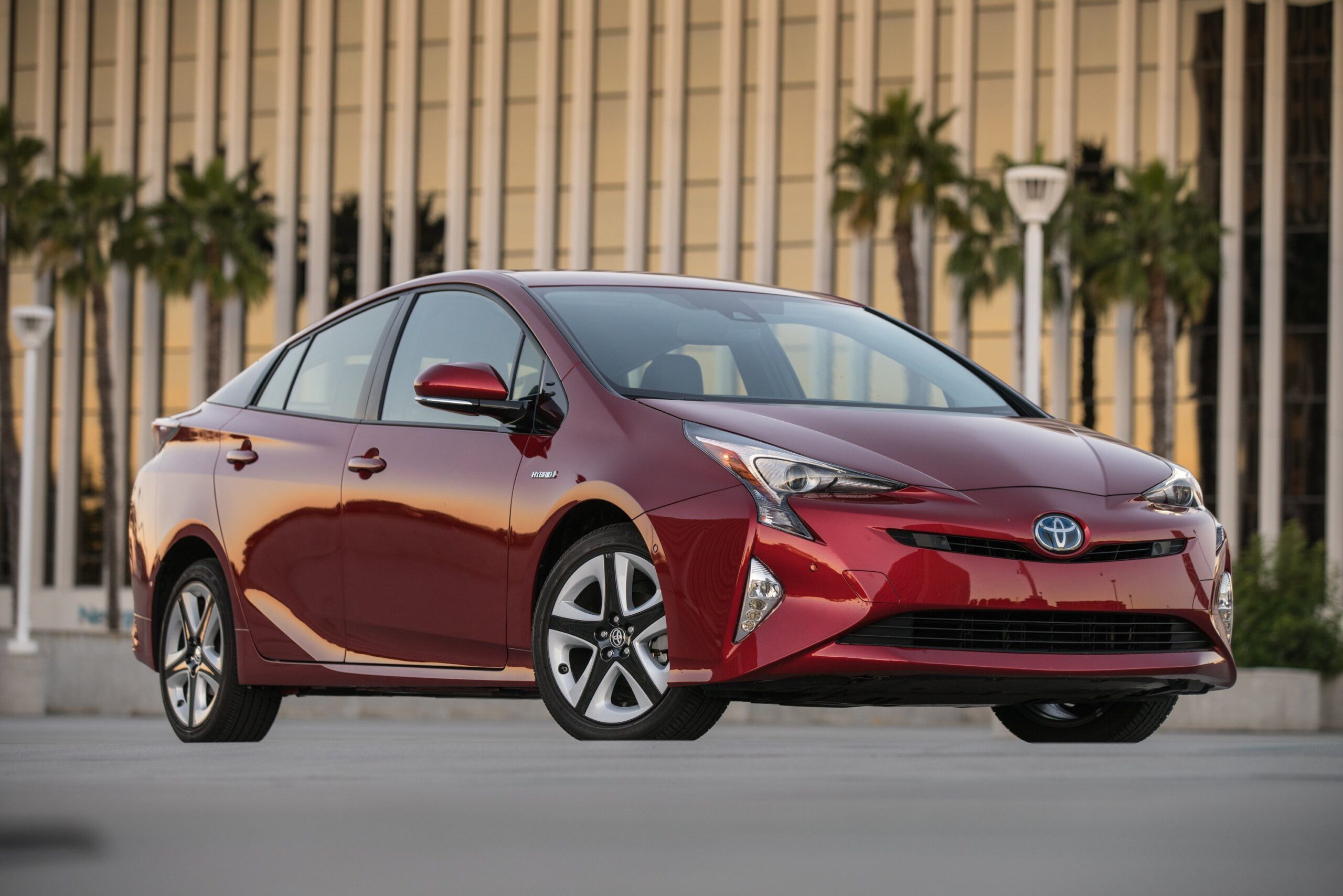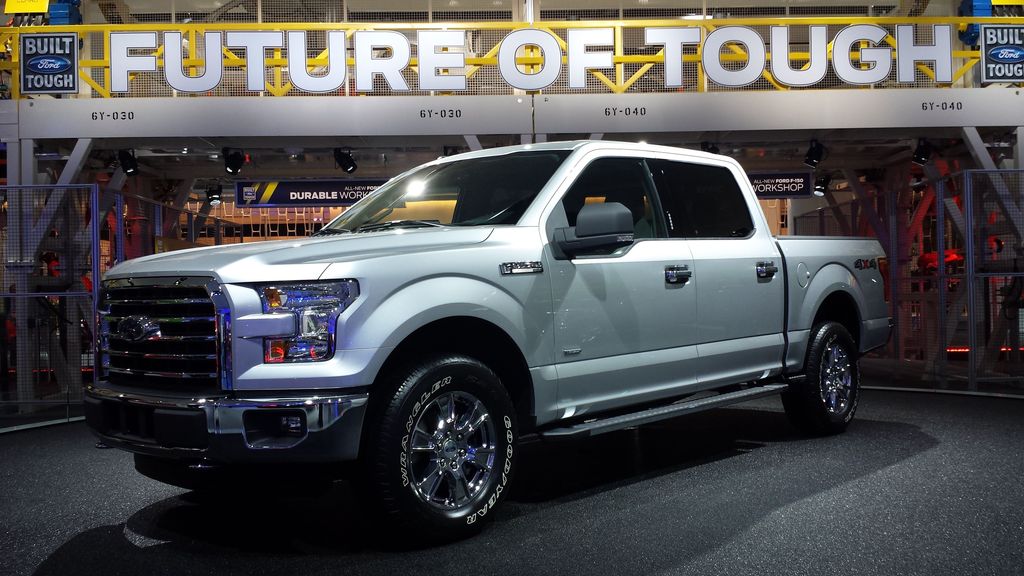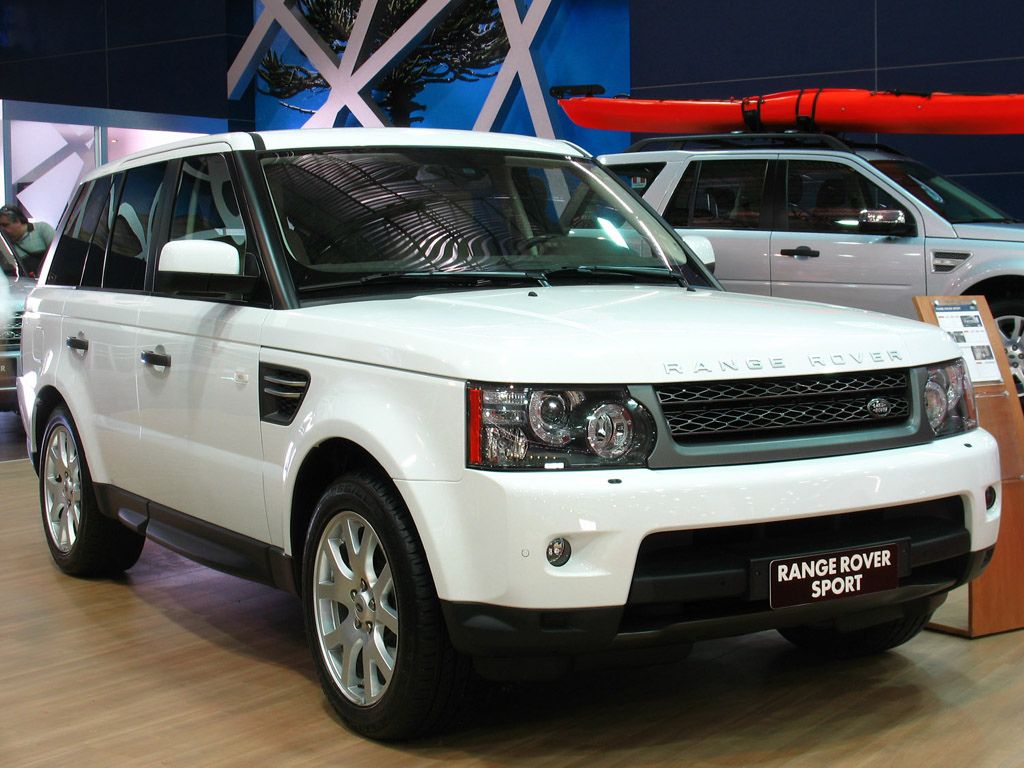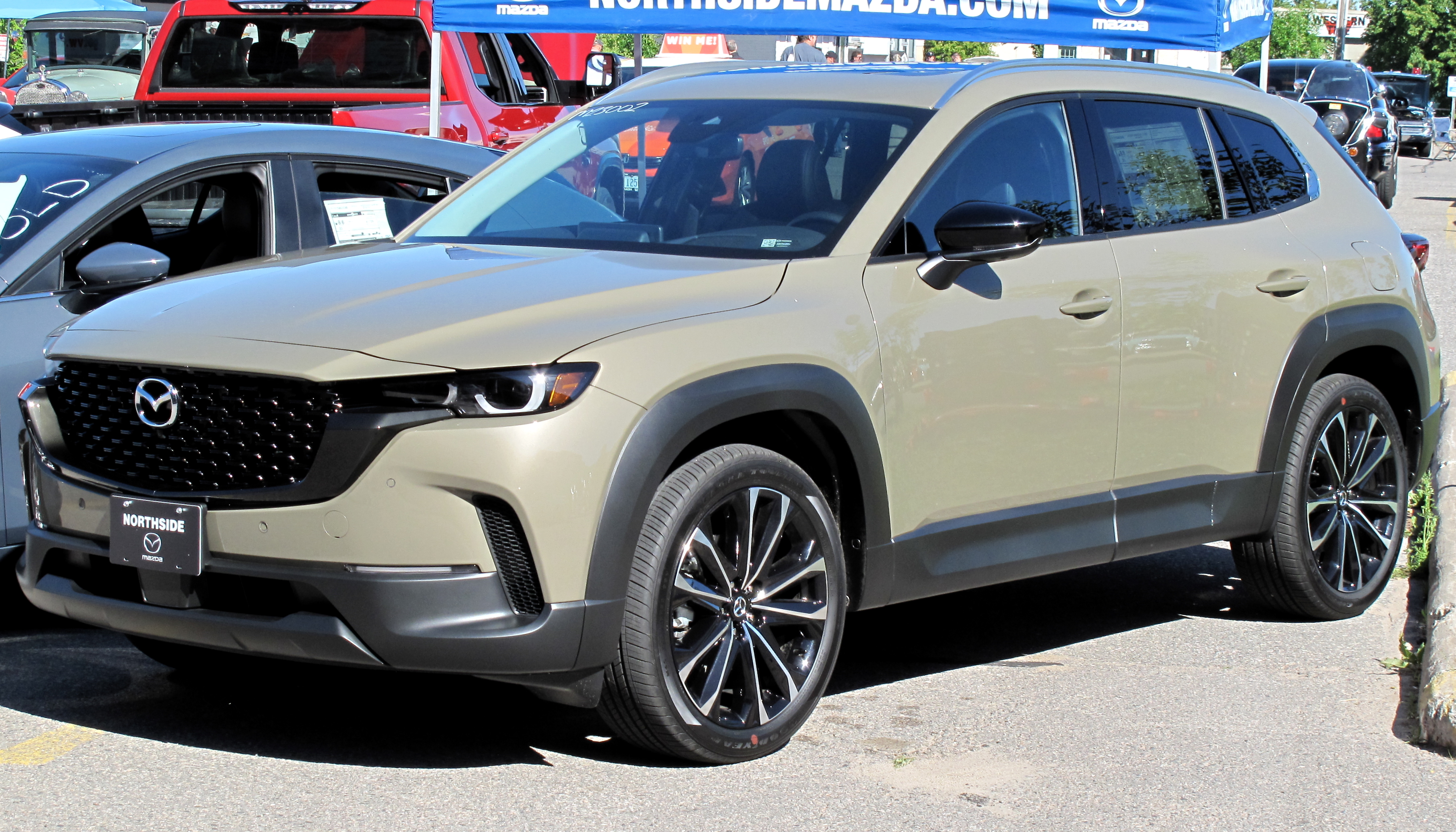
Hybrid cars have long been championed as the ultimate middle ground, offering a compelling blend of gasoline and electric power that promises the best of both worlds. Since the Toyota Prius spearheaded the hybrid movement in the early 2000s, nearly every major car brand has joined the race to introduce their own hybrid options, reflecting a widespread belief in their benefits. Indeed, for many, choosing a hybrid means saving money on gas, reducing one’s carbon footprint, and often embracing some of the latest automotive technology available. This widespread adoption is evident in recent figures, with hybrids being the flavor of the year, and petrol mild hybrids seeing the largest percentage sales growth of any cars in 2024 versus 2023. Conventional hybrids captured nearly 12% of new-vehicle sales in the first quarter of 2025, marking their largest market share to date.
Yet, as the hybrid market matures and expands, so too does the need for vigilant consumer awareness. While the allure of improved fuel economy and reduced emissions is undeniable, not all hybrid vehicles are created equal when it comes to long-term reliability and overall value. For consumers looking for a vehicle that will truly stand the test of time, particularly those with a keen eye on longevity and predictable ownership costs, a closer look at expert recommendations is not just wise—it’s essential. The average car on American roads is almost 13 years old, highlighting how infrequently many people shop for a new vehicle, making an informed decision all the more critical for a lasting investment.
In this in-depth guide, we delve into specific hybrid models that auto experts advise buyers to approach with caution, or even to avoid entirely. Drawing upon rigorous analysis and real-world owner experiences, we aim to equip you with the unbiased, data-driven insights necessary to navigate the complex hybrid market. Our goal is to empower your purchasing decisions by highlighting potential pitfalls and ensuring you invest in a vehicle that genuinely meets your expectations for reliability, performance, and financial prudence. Here are the first four hybrid cars experts suggest you reconsider buying immediately.

1. **Ford F-150 Hybrid**In an effort to provide a compelling alternative to more compact hybrid models, the Ford F-150 Hybrid entered the market with the promise of combining robust utility with enhanced fuel efficiency. This model aimed to cater to a demographic that required the capabilities of a full-sized truck but also sought the environmental and economic benefits associated with hybrid technology. The concept itself was intriguing, suggesting a versatile solution for a wide range of consumers, from those needing a workhorse vehicle to families desiring more towing capacity with a greener footprint.
However, the reality for many owners has proven to be less than ideal, with significant issues clouding its appeal. Concerns regarding the vehicle’s overall reliability have been a recurring theme among reports, casting a shadow over its long-term viability. Adding to these worries, the fuel efficiency of the Ford F-150 Hybrid has notably fallen short of expectations. In 2022, Edmunds, a respected authority in automotive reviews, reported that its real-world fuel efficiency figures were considerably below the initial estimates.
These combined factors – persistent reliability issues and a failure to meet its promised fuel economy – render the Ford F-150 Hybrid a less attractive option for discerning buyers. When a vehicle, especially one in the hybrid segment, struggles with its fundamental promises of efficiency and dependability, it directly impacts the owner’s experience and the perceived value of their investment. The initial appeal of a hybrid truck quickly diminishes when these core aspects falter.
Carl Rodriguez, the head of content at NX Automotive Transport, has explicitly stated that the Ford F-150 Hybrid has received low rankings for reliability. He elaborated on the specific culprits behind these reliability woes, explaining that “Consumer reports have shown that this was the case predominantly because of battery and transmission issues.” These are critical components, and problems within them can lead to costly and frequent repairs, undermining the very reason many consumers opt for a new vehicle.
When considering a hybrid, the expectation is often a sophisticated interplay of systems designed for efficiency and durability. However, if the foundational hybrid components like the battery, or essential mechanical elements such as the transmission, are prone to failure, it directly contradicts the value proposition. For buyers seeking a dependable vehicle that offers consistent performance and predictable maintenance, the reported issues with the Ford F-150 Hybrid suggest it might not live up to those crucial standards.
Car Model Information: 2023 Ford F-150 XLT
Name: Ford F-Series
Caption: 2022 Ford F-150 Lariat Luxury
Manufacturer: Ford Motor Company
Aka: Ford Lobo (Mexico, 1992–present)
Production: 1948–present
Class: Pickup truck#Full-size pickup truck
Layout: Front-engine, rear-wheel-drive layout,rear-wheel drive
Predecessor: 1941 Ford
Categories: All-wheel-drive vehicles, All Wikipedia articles written in American English, All articles that may contain original research, All articles with unsourced statements, Articles that may contain original research from September 2020
Summary: The Ford F-Series is a series of light-duty trucks marketed and manufactured by the Ford Motor Company since model year 1948 as a range of full-sized pickup trucks — positioned between Ford’s Ranger and Super Duty pickup trucks. Alongside the F-150 (introduced in 1975), the F-Series also includes the Super Duty series (introduced in 1999), which includes the heavier-duty F-250 through F-450 pickups, F-450/F-550 chassis cabs, and F-600/F-650/F-750 Class 6–8 commercial trucks.
Get more information about: Ford F-Series
Buying a high-performing used car >>>
Brand: Ford Model: F-150
Price: $29,895 Mileage: 55,430 mi.
Read more about: Beyond the Zombie Hordes: 12 Indestructible Beasts to Master Any Apocalypse

2. **BMW ActiveHybrid 5**The BMW ActiveHybrid 5 was introduced with the ambitious goal of carving out a niche as a luxury sedan that could also deliver a competitive fuel economy. Positioned within BMW’s prestigious lineup, it promised the sophisticated driving experience and premium amenities that the brand is renowned for, while also offering the modern efficiency benefits of hybrid technology. The allure was to combine high-end performance and comfort with an eco-conscious approach to fuel consumption, appealing to luxury buyers who also valued efficiency.
Despite its luxurious branding and advanced engineering, the ActiveHybrid 5 has struggled to meet expectations, particularly in its core promise of fuel efficiency. The actual fuel economy figures for this model consistently fall short when weighed against its premium price tag. For a vehicle marketed on its hybrid credentials, this discrepancy is a significant drawback, as buyers in this segment expect both luxury and performance, alongside tangible economic benefits.
Another notable shortcoming of the ActiveHybrid 5 is its lack of cargo space. This particular flaw makes the vehicle less than ideal for practical applications such as extended travel or family use, where luggage and passenger comfort are paramount. The combination of underperforming fuel economy and compromised utility significantly diminishes its value proposition for luxury consumers who anticipate a versatile and efficient vehicle.
Carl Rodriguez, an authority in the automotive field, commented on the vehicle’s performance, stating, “The BMW ActiveHybrid 5, despite carrying the weight of the brand, has failed to live up to expectations.” He further clarified the extent of its shortcomings, adding, “Rather, I should say it fails to deliver on what it was made for to begin with. It gets 26 miles per gallon, which is criminally low for a hybrid vehicle. It’s as though it had one job and failed to execute it.” This blunt assessment underscores the vehicle’s failure to perform on its primary hybrid function.
Indeed, for a hybrid to achieve a mere 26 miles per gallon, a figure often comparable to or even surpassed by non-hybrid gasoline vehicles in the luxury segment, is a serious concern. The premium associated with hybrid technology typically implies a substantial improvement in fuel consumption. When that improvement is negligible or non-existent, the additional cost and complexity of the hybrid system become difficult to justify, making the BMW ActiveHybrid 5 a perplexing choice for luxury consumers prioritizing efficiency.
Car Model Information: 2021 Nissan Rogue SL
Name: BMW 5 Series,(F10/F11/F07/F18)
Manufacturer: BMW
Production: 2010–2017
ModelYears: 2011–2017
Assembly: ubl
Designer: Jacek Fröhlich (sedan: 2006)
Class: Executive car
BodyStyle: sedan (car),Wheelbase#Varying_wheelbases_within_nameplate,station wagon,fastback
Layout: Front-engine, rear-wheel-drive,Front-engine, all-wheel drive
Platform: BMW L6
Engine: unbulleted list
Transmission: unbulleted list
Wheelbase: 2968 mm
Abbr: on
Length: convert
Width: 1860 mm
Height: 1460 mm
Weight: convert
Predecessor: BMW 5 Series (E60)
Successor: BMW 5 Series (G30)
Related: BMW 7 Series (F01),BMW 6 Series (F12),BMW X5 (F15),VinFast LUX A2.0
Categories: All Wikipedia articles written in British English, All articles with dead external links, All articles with failed verification, Articles with dead external links from February 2022, Articles with failed verification from June 2020
Summary: The sixth generation of the BMW 5 Series consists of the BMW F10 (saloon version), F18 (long-wheelbase saloon), BMW F11 (wagon, marketed as Touring) and BMW F07 (fastback/hatchback, marketed as Gran Turismo) executive cars and were produced by BMW from January 2010 (for the 2011 model year) to 2017, with F10 being launched on 20 March 2010 to domestic market and F11 in the summer of 2010. The F07 Gran Turismo was produced from early September 2009 to 2017, being launched in the domestic German market in late October 2009.
The F10 5 Series shares a platform with the F01 7 Series full-size luxury saloon and the F12 6 Series executive-sized grand tourers. The F10 generation is the first 5 Series to offer a hybrid drivetrain, a turbocharged V8 engine, an 8-speed automatic transmission, a dual-clutch transmission (in the M5), active rear-wheel steering (called “Integral Active Steering”), electric power steering, double-wishbone front suspension, an LCD instrument cluster (called “Black Panel Display”) and automatic parking (called “Parking Assistant”). A long-wheelbase saloon version (model code F18) was sold in China, Mexico, Turkey and the Middle East. Introduced in 2011, the M5 model is powered by the BMW S63 twin-turbocharged V8 engine coupled to a 7-speed dual clutch transmission. The Gran Turismo (F07) is the first and only 5 Series to be produced in a fastback body style with a hatchback boot opening.
In February 2017, the G30 5 Series was released as the successor to the F10. Based on the G30 platform, the G32 6 Series Gran Turismo succeeded the F07.
Get more information about: BMW 5 Series (F10)
Buying a high-performing used car >>>
Brand: BMW Model: ActiveHybrid 5
Price: $20,995 Mileage: 117,217 mi.
_SD4_Pure_Tech_4WD_5-door_wagon_(2015-11-13)_01.jpg/1200px-2013_Land_Rover_Range_Rover_Evoque_(L538_MY13.5)_SD4_Pure_Tech_4WD_5-door_wagon_(2015-11-13)_01.jpg)
3. **Range Rover Evoque PHEV**The Range Rover Evoque PHEV enters the market as a luxury SUV designed to blend distinctive style and premium options with the advanced capabilities of a plug-in hybrid electric vehicle. Its high price tag places it squarely in the luxury segment, where buyers expect a seamless combination of aesthetic appeal, robust performance, and cutting-edge technology. The Evoque PHEV aims to offer a more environmentally conscious choice without compromising the iconic Range Rover experience.
However, its performance in key areas has drawn criticism, most notably concerning its fuel economy. Car and Driver, a reputable automotive publication, characterized the vehicle’s fuel economy as “rather dismal.” This assessment is particularly concerning for a PHEV, which is specifically designed to offer superior efficiency. Furthermore, the vehicle has been noted for its small rear passenger space, a significant drawback that makes it unsuitable for adults on longer journeys, impacting its practicality as a luxury SUV.
These issues, while notable on their own, are compounded by more severe reliability concerns reported by owners. Ruth Calkins, an auto expert and general manager at Find by Plate, issued a strong warning regarding the Evoque PHEV’s reliability. She revealed that “almost 2 out of every 3 owners complaining about this hybrid’s electrical system, body work and engine, the Range Rover Evoque PHEV, easily makes the list of hybrid cars you should definitely not consider buying.” This high rate of serious complaints points to systemic problems rather than isolated incidents.
The scope of these issues—electrical system, body work, and engine problems—highlights fundamental flaws that significantly detract from the ownership experience. Calkins further elaborated on its deficiencies, stating, “What makes this car a poor choice is its frequent breakdowns and its infotainment system issues.” Frequent breakdowns are not only costly but also erode trust and convenience, which are paramount for luxury vehicle owners.
In addition, problems with the infotainment system, a central feature in modern luxury cars, can significantly diminish user satisfaction and the perception of advanced technology. Given its high price point and the expectation of premium quality and reliability, the Range Rover Evoque PHEV’s reported issues make it a challenging proposition for consumers seeking a dependable and luxurious plug-in hybrid SUV.
Car Model Information: 2021 Nissan Rogue SL
Name: Range Rover Evoque
Caption: 2019 Range Rover Evoque R-Dynamic
Manufacturer: Land Rover Ltd.,Jaguar Land Rover
Production: July 2011 – present
Class: subcompact crossover SUV
Layout: ubl
Predecessor: Land Rover Freelander
Sp: uk
Categories: 2020s cars, ANCAP small off-road, All-wheel-drive vehicles, All Wikipedia articles written in British English, All articles lacking reliable references
Summary: The Land Rover Range Rover Evoque (), also known as the Range Rover Evoque or the Land Rover Evoque, is a subcompact luxury crossover SUV developed and produced by Jaguar Land Rover under their Land Rover marque. The original Evoque was a development of the Land Rover LRX concept vehicle, which was unveiled at the North American International Auto Show in January 2008. The first generation Evoque was produced from July 2011 until 2018 in three and five-door versions, with both two-wheel and four-wheel drive. The second generation of the car went into production in 2018.
Get more information about: Range Rover Evoque
Buying a high-performing used car >>>
Brand: Range Rover Model: Evoque PHEV
Price: $20,995 Mileage: 117,217 mi.
Read more about: Steer Clear: 14 SUVs With a History of High-Cost Fixes in Their First 5 Years

4. **Hyundai Tucson Hybrid**On paper, the Hyundai Tucson Hybrid often presents itself as a highly appealing option in the crowded compact SUV segment. It appears to tick many boxes for prospective buyers, offering a modern design, a range of features, and the promise of improved fuel efficiency inherent in its hybrid powertrain. This initial impression suggests a vehicle that could seamlessly integrate into daily life, providing a practical yet technologically advanced driving experience for families and individuals alike.
However, the reality of ownership has revealed a pattern of reliability issues that undermine its attractive specifications. Owners have reported a variety of persistent problems, notably including transmission difficulties that can impact smooth operation and long-term durability. Engine issues have also been a concern, suggesting potential flaws in the vehicle’s core mechanical performance. Furthermore, reports of poor brake performance raise significant safety concerns, which are paramount for any vehicle owner.
Beyond the major mechanical components, issues with the suspension system have also been reported, leading to discomfort for occupants. A car’s suspension system is crucial for a smooth and enjoyable ride, and problems in this area can significantly detract from the overall driving experience, making even routine commutes less pleasant. These multifaceted reliability problems challenge the Tucson Hybrid’s standing as a dependable and comfortable vehicle.
Carl Rodriguez, lending his expert perspective, shared, “While on paper the Hyundai Tucson Hybrid seems to tick all the boxes, I’ve heard horror stories from clients I have spoken to.” This firsthand account from a professional dealing directly with car owners adds substantial weight to the reported issues, moving beyond anecdotal evidence to a pattern observed by industry experts.
Rodriguez specifically highlighted a common complaint among his clients: “Many of them say the features and controls are just not user-friendly.” In an era where intuitive technology is a major selling point, poorly designed or complicated user interfaces can be a source of constant frustration. This combination of mechanical unreliability and design shortcomings makes the Hyundai Tucson Hybrid a challenging recommendation for consumers prioritizing both dependability and an effortless driving experience, despite its initial appeal.
While the initial appeal of hybrid vehicles often centers on efficiency and modern technology, discerning buyers, particularly those planning for extended ownership, must consider longevity and potential long-term costs. For retirees, who frequently rely on fixed incomes and aim to avoid unexpected expenses down the road, making an informed choice about a hybrid car is paramount. They seek vehicles that promise many miles without significant future outlays. Unfortunately, not all hybrids deliver on this promise of enduring value and dependable service, with some models presenting complexities and repair costs that can quickly diminish their perceived benefits. Auto industry expert Melanie Musson, from CarInsurance.org, specifically identified several hybrid vehicles that retirees, and indeed any buyer prioritizing durability, should consider avoiding due to inherent issues that undermine their long-term viability.
Concerns about hybrid technology’s aging process also factor into these recommendations. As TikToker Scotty Kilmer noted, hybrid cars are “insanely complex” and often “degrade quicker than a conventional gas-powered vehicle.” This complexity means they are not “DIY friendly,” requiring mechanics to possess specialized tools and safety equipment like gloves rated for 1,000 volts and specific non-conductive fluids. Such specialized care directly translates to higher repair costs, as Kilmer explained that as hybrids age, “they can cost a small fortune to repair correctly.” Furthermore, Energy Sage, a renewable energy website, reinforces this by listing “higher upfront costs and expensive maintenance costs,” including battery replacements that can exceed $2,000, as significant downsides. These factors underscore why a careful, expert-guided approach is crucial when evaluating hybrid purchases for long-term ownership.
Car Model Information: 2021 Nissan Rogue SL
Name: Hyundai Tucson
Caption: Hyundai Tucson (NX4, SWB)
Manufacturer: Hyundai Motor Company
Aka: Hyundai ix35 (2009–2015)
Production: 2004–present
ModelYears: 2005–present
Class: Compact crossover SUV
BodyStyle: sport utility vehicle
Layout: Front-engine, front-wheel-drive layout,Front-engine, four-wheel-drive layout
Sp: us
Categories: 2010s cars, All-wheel-drive vehicles, All Wikipedia articles written in British English, All articles needing additional references, All articles with dead external links
Summary: The Hyundai Tucson is a compact crossover SUV produced by the South Korean manufacturer Hyundai. It is named after the city of Tucson, Arizona, U.S. The second-generation model was marketed as the Hyundai ix35 in several markets, including Europe, Australia and China, before reverting to Tucson for the third-generation. Since its first-generation, the Tucson has been developed alongside the Kia Sportage, sharing platforms and engines. The Tucson is the best-selling Hyundai model, with more than 7 million units sold globally since it launched in 2004. Of these, 1.4 million units have been sold in Europe.
Get more information about: Hyundai Tucson
Buying a high-performing used car >>>
Brand: Hyundai Model: Tucson Hybrid
Price: $20,995 Mileage: 117,217 mi.
Read more about: 12 New Cars Named ‘Best Buys’ for 2025: An Expert Guide for Savvy Shoppers

5. **Chrysler Pacifica Hybrid**For retirees seeking a dependable hybrid vehicle, the Chrysler Pacifica Hybrid stands out as a model to approach with caution. While minivans often appeal to families and, by extension, those looking for practical and spacious vehicles for grandchildren or travel, this particular hybrid variant carries a reputation for significant problems that can severely impact its long-term reliability. Its allure as a family-friendly hybrid option is overshadowed by recurring mechanical and electrical concerns that prospective owners must weigh carefully.
Melanie Musson, an auto industry expert, explicitly advises against purchasing the Chrysler Pacifica Hybrid for its problematic reputation. She highlights that these vehicles are “likely to have electrical problems that impact how the engine performs.” Such electrical glitches are not merely minor inconveniences; they can manifest as critical operational failures, with Musson further explaining that “Sometimes, these electrical connection problems result in engine shutdowns.” This kind of unpredictable behavior is not only frustrating but can also pose safety concerns and lead to substantial repair bills.
Beyond the performance-related electrical issues, the integrity of the hybrid system’s core component—the battery—is also a significant drawback. Musson points out that “The battery that enables the hybrid status tends to fail before it should.” A premature battery failure directly undermines the vehicle’s hybrid function, leading to a loss of the very fuel efficiency benefits that attract buyers to hybrids in the first place. “Without that battery, fuel efficiency will be poor,” she concluded, effectively negating a primary reason for choosing a hybrid.
The implications for long-term ownership are clear and concerning. A vehicle plagued by premature battery failures and engine-affecting electrical issues is ill-suited for anyone hoping for a decade of trouble-free driving. Musson’s candid assessment that “So if you are hoping to get 10 years out of your hybrid vehicle, then the Chrysler Pacifica Hybrid is not the car for you” serves as a stark warning. For retirees living on a fixed income, the prospect of frequent, costly repairs on a vehicle designed for efficiency makes this hybrid a challenging and potentially costly proposition, contradicting the goal of predictable and low-maintenance ownership.
Car Model Information: 2023 Chrysler Pacifica Touring-L
Categories: All set index articles, Articles with short description, Chrysler vehicles, Set index articles on cars, Short description is different from Wikidata
Summary: Chrysler Pacifica is a nameplate used by Chrysler for a variety of vehicles.
The name was first used on a luxury minivan concept vehicle in 1999, and later a crossover concept in 2002.
From 2004 to 2008, it was used on a mid-size crossover, and since the 2017 model year, it has been used as the Town & Country minivan’s replacement.
Vehicles using the nameplate are:
Chrysler Pacifica concept (1999), concept minivan
Chrysler Pacifica concept (2002), concept crossover
Chrysler Pacifica (crossover) (2004–2008), production version of the 2002 concept
Chrysler Pacifica (minivan) (2017–present), Chrysler Town & Country replacement
Get more information about: Chrysler Pacifica
Buying a high-performing used car >>>
Brand: Chrysler Model: Pacifica
Price: $33,900 Mileage: 24,486 mi.
Read more about: Steering Clear: 7 Vehicles Former Owners Beg You Not to Buy

6. **Land Rover Range Rover Hybrid**When retirement arrives, many individuals consider indulging in luxury purchases they’ve long desired, and a prestigious vehicle like a Land Rover often comes to mind. The Land Rover brand evokes images of chic styling, robust capability, and a youthful spirit. However, for those eyeing the Land Rover Range Rover Hybrid, particularly retirees, experts issue strong warnings, suggesting that despite its premium appeal, this model may be more of a financial burden than a luxurious treat, earning it the label of a potential “clunker” in the hybrid segment.
Melanie Musson, an auto industry expert, did not mince words when discussing the value proposition of Range Rovers, stating they are “one of the worst buys for your money on the market today.” This critical assessment is amplified for the hybrid variant. She further elaborated that “the hybrid model has the potential to have even more problems than the standard model,” indicating that the added complexity of hybrid technology introduces new layers of potential unreliability, which is particularly concerning given the brand’s general reputation for high maintenance costs.
A central and debilitating issue with the Range Rover Hybrid, as highlighted by Musson, is the susceptibility of its charging system to failure. “The charging system is prone to failure, making the hybrid capability completely useless,” she explained. This flaw is catastrophic for a hybrid vehicle, as it strips away the very essence of its design—the ability to utilize electric power for efficiency. Without a functioning charging system, owners are left with an expensive, heavy gasoline vehicle that cannot deliver on its eco-friendly or fuel-saving promises.
Compounding these problems are fundamental communication breakdowns between the vehicle’s power systems. Musson also noted, “Additionally, the electric operating system and the ICE system have communication problems that lead to engine glitches.” These systemic issues, affecting the interplay between the internal combustion engine (ICE) and the electric components, can result in inconsistent performance, unexpected malfunctions, and potentially costly diagnostic and repair processes. For retirees on a fixed income, the frequent and complex repairs associated with such deep-seated problems can quickly deplete savings and turn a dream car into a financial nightmare.
Car Model Information: 2021 Nissan Rogue SL
Name: Range Rover Sport
Assembly: Solihull plant
Designer: Gerry McGovern
Manufacturer: Land Rover Ltd.,Jaguar Land Rover
Production: 2005–present
Class: Executive car,SUV
BodyStyle: SUV
Layout: Front-engine, four-wheel-drive
Successor: Range Rover (L460)
Categories: 2010s cars, 2020s cars, All-wheel-drive vehicles, All Wikipedia articles written in British English, All articles needing additional references
Summary: The Land Rover Range Rover Sport, generally known as the Range Rover Sport, is a mid-size luxury SUV produced under their Range Rover marque, by the British car manufacturer Land Rover, later Jaguar Land Rover. The first generation (codename: L320) started production in 2005, and was replaced by the second generation Range Rover Sport (codename: L494) in 2013, which was replaced by the third generation Range Rover Sport (codename: L461) in 2022.
Get more information about: Range Rover Sport
Buying a high-performing used car >>>
Brand: Land Rover Model: Range Rover Hybrid
Price: $20,995 Mileage: 117,217 mi.
Read more about: Expert Insights: Luxury Cars You’ll Regret Buying Due to Hidden Costs and Reliability Issues

7. **Mazda CX-50 Hybrid**While Mazda generally offers well-regarded vehicles in the market, the CX-50 Hybrid model presents a notable exception, particularly for those prioritizing a smooth, reliable, and durable driving experience, such as retirees. Despite Mazda’s reputation for quality, the hybrid iteration of the CX-50 has garnered specific criticisms that suggest it falls short of the brand’s usual standards when it comes to long-term performance and ownership value. For anyone seeking a vehicle to depend on for years, a closer look at its reported drawbacks is essential.
One of the primary complaints about the Mazda CX-50 Hybrid revolves around its driving dynamics, specifically its acceleration. Expert Melanie Musson elucidated this issue, stating that “The CX-50 Hybrid struggles with acceleration, making the ride frustrating when trying to merge, climb hills and get going from a stop.” This lack of responsive power can be more than just an inconvenience; it can create hazardous situations on highways or in demanding driving conditions, detracting significantly from the expected driving pleasure and safety of a modern vehicle.
The added weight inherent in hybrid components introduces another layer of concern for the CX-50 Hybrid’s durability. Musson pointed out that “Because of the extra weight from the hybrid components, the suspension and axles experience more rapid wear.” This accelerated wear on critical undercarriage components implies a higher likelihood of needing significant repairs or replacements sooner than anticipated. For retirees, this translates directly to unforeseen expenses and potentially prolonged downtime for their vehicle, undermining the desire for predictable and reliable transportation.
Furthermore, the CX-50 Hybrid is not immune to issues that can bring a vehicle’s service life to an abrupt halt. Musson specifically warned that “The CX-50 is also prone to transmission problems that can put a quick stop to a vehicle’s service.” Transmission failures are among the most serious and costly mechanical issues a car can face, often necessitating extensive repairs or even replacement. Such a major mechanical vulnerability makes it a particularly risky choice for those on a fixed income, who cannot afford large, unexpected automotive expenditures.
Considering these cumulative drawbacks—frustrating acceleration, accelerated wear on suspension and axles due to increased weight, and serious transmission problems—the Mazda CX-50 Hybrid becomes a less-than-ideal option for long-term ownership. Musson’s advice is clear: “If you are a retiree who is hoping to have your hybrid vehicle running from now to 2026, pass on buying the Mazda CX-50.” This strong recommendation underscores the vehicle’s unsuitability for consumers seeking a durable, predictable, and cost-effective mode of transportation over an extended period.
Car Model Information: 2024 Mazda CX-50 2.5 S Preferred Package
Name: Mazda CX-50
Caption: 2023 Mazda CX-50 GT (Canada)
Manufacturer: Mazda
ModelCode: VA
Production: January 2022 – present
ModelYears: 2023–present
Assembly: unbulleted list
Designer: Eiji Kimoto,
Class: Compact crossover SUV
BodyStyle: SUV
Layout: Front-engine, all-wheel-drive
Platform: Skyactiv#Small Product Group
Related: unbulleted list
Engine: unbulleted list
Powerout: unbulleted list
Transmission: unbulleted list
Wheelbase: cvt
Length: unbulleted list
Width: cvt
Height: cvt
Weight: cvt
Sp: us
Categories: All-wheel-drive vehicles, All Wikipedia articles written in American English, Articles with short description, CS1 Chinese-language sources (zh), CS1 Chinese (China)-language sources (zh-cn)
Summary: The Mazda CX-50 is a compact crossover SUV produced by the Japanese automobile manufacturer Mazda since 2022 for the 2023 model year, for the North American and Chinese markets. Based on the same transverse, front-wheel-drive platform as the fourth-generation Mazda3 and the CX-30, the vehicle is sold alongside the slightly smaller CX-5 and is positioned below the larger, rear-wheel-drive based CX-70.
Get more information about: Mazda CX-50
Buying a high-performing used car >>>
Brand: Mazda Model: CX-50
Price: $27,830 Mileage: 41,984 mi.
Read more about: 12 New Cars Named ‘Best Buys’ for 2025: An Expert Guide for Savvy Shoppers
Navigating the increasingly diverse landscape of hybrid vehicles requires diligence and an unwavering commitment to data-driven insights. While the promise of improved fuel economy and reduced emissions remains a powerful draw, our deep dive into these expert-flagged models underscores a critical truth: not all hybrids are created equal. The inherent complexities of combining gasoline and electric powertrains, from battery longevity to intricate electrical systems and software integration, introduce potential vulnerabilities that can significantly impact a vehicle’s long-term reliability and ownership costs. For any consumer, but especially for retirees focused on fixed incomes and durable investments, understanding these nuances is not just smart—it’s financially essential. Ultimately, making an informed decision, backed by expert analysis and real-world owner experiences, ensures your next vehicle genuinely enhances your life without becoming a drain on your resources. Choosing wisely today can prevent unforeseen frustrations and expenses tomorrow, securing a vehicle that truly stands the test of time.



